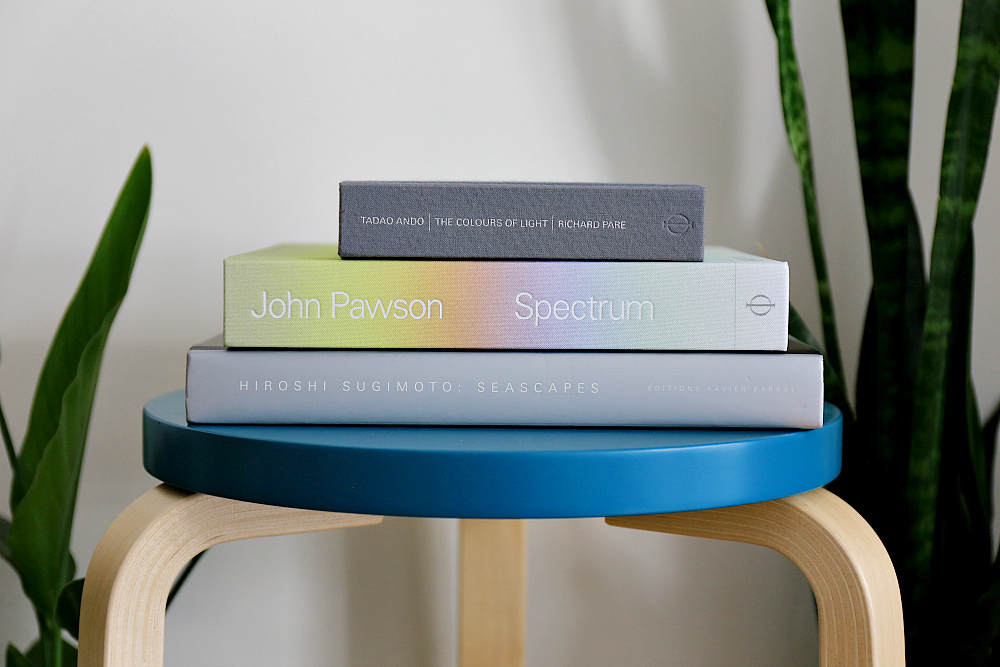Our coffee table is currently wrapped in thick layers of industrial bubble wrap, separated into 3 sections, and hidden under our bed and at the back of a wardrobe - safe and sound from our boisterous toddler. But that won't stop us taking inspiration from Jordan Bunker's "Coffee table reads" and sharing what is on our makeshift coffee table.
TADAO ANDO | THE COLOURS OF LIGHT by Richard Pare
A beautiful look at 22 of Tadao Ando's buildings through the able lens of Richards Pare, a photographer who works only with natural light. This is more than an architectural picture book. Pare's sensitivity to the textural finesse and the poetic dialogue between natural light and the textures and forms of Ando's buildings is remarkable. The photos are accompanied with a forward penned by Ando himself and some of his drawings appear throughout, all adding to insight to one of the most celebrated architects of our time.
JOHN PAWSON | SPECTRUM
John Pawson is better known for his minimalist architecture but to Super Ordinary Life, he is an inspiration because of his visual inventory. Similarly to George Nelson, Pawson compulsively records what catches his eye and has amassed a staggering archive of images that he regards as a important tools for his work. In Spectrum, Pawson celebrates the subject of colour from the most unexpected sources across the globe. For us, it is another inspiring lesson in visual thinking and observation.
HIROSHI SUGIMOTO | SEASCAPES
Hiroshi Sugimoto has travelled the world photographing its seas and the result is this stunning meditation on water, light and air - the primordial stuff of life. Seascapes is a powerful book and certainly one to travel through in quiet moments. It includes 200 seascapes of identical format, the horizon aligned throughout. There is stillness that lulls you into a feeling of timelessness. Like we said, it's quietly powerful.
We prefer much of our home life as analogue as possible. Because of this, we are a household that uses pencils, pens and fill notebooks with ideas, we sketch on paper, we play records, we read the time from an analogue wall clock, we like to look at books.
Yasumi used to be a keen reader who begun buying e-books to save space and money and as a step in decided if the books was worth buying as a printed copy.
Hiro isn't a big reader. He rarely reads fiction. If you ask him what type of books he likes, he will probably say; "I like picture books". Picture books to Hiro are non-fiction publications usually on the subject of light, architecture, photography and a few other subjects in between, that are best viewed off a screen. More often than not, they include photographs, drawings and maps which all are best looked at in print and at leisure.
A lot of the coffee table books that we own are huge big hardback volumes (picture books) that are not available digitally. Besides, although E-books have their place and a great deal of purpose, let's be honest, some books just don't work in digital format. The three discussed here are good examples of this.
Owning large such books requires commitment. They need space, they are heavy to move with. So, we'd like to think that our collection of coffee table books were all bought with real consideration and that they will remain with us for us to be inspired by for years to come.
P.S. Borrowing large, heavy books from a library is great way to maximise space at home, decide if it's something that you really want to own or to (re)discover books that are no longer available to buy.


